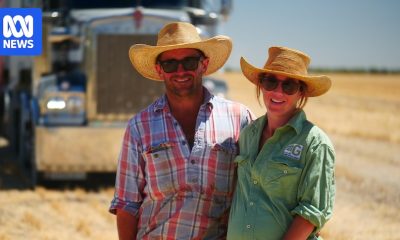Science
How a small Arab nation built a Mars mission from scratch in six years – Nature.com
The United Arab Emirates’ Hope orbiter is the Arab world’s first interplanetary spacecraft — and has jump-started science in the country. Will the momentum last?

Much of the UAE is so new it feels like the future. But Dubai’s Burj Khalifa — the world’s tallest building — and driverless metro system are a long way from the country’s beginnings as a group of impoverished communities from distinct tribes that joined forces in the wake of independence from the United Kingdom in 1971. Since then, oil wealth and bold infrastructure projects have helped to turn the desert nation into a global business, shipping and tourism hub and one of the richest countries in the world per capita. “Whatever the UAE has done since day one has been about survival,” says Sharaf.
But the very sectors that helped the UAE’s major cities to thrive have proved vulnerable to a series of economic crashes, and the Arab Spring rocked the region. Some aspects of oil wealth have created long-term problems, especially the UAE’s high-paying government jobs and its generous subsidies for citizens, who make up just 12% of the population (which consists largely of immigrants). Throughout the Gulf, these factors have long made jobs in start-ups, the private sector or research less appealing. Although the UAE is famous for its breathtaking goals, its citizens are typically left with little ambition, says Jon Alterman, director of the Middle East Program at the Center for Strategic and International Studies in Washington DC. “The government has been trying for years to create both alternative pathways and alternative incentives to have people aspire to something more than a low-effort government job,” he says.
The country is not only running out of oil, but also faces major challenges in providing enough food and water for its population. Emirati undergraduates tend to study engineering or business, but fewer than 5% pursue degrees in basic sciences, including medicine, or progress to PhD level. Data from the United Nations Educational, Scientific and Cultural Organization data show that the country produced no PhD graduates before 2010 — and in 2017, doctoral students made up less than 0.8% of the tertiary-education population, half the level for the Arab states overall. And although women make up almost 60% of all university graduates and 41% of those in science, technology, engineering and mathematics (STEM), converting this talent into a workforce, especially in science, has been recognized as a challenge (see ‘Science on the rise’).
The idea to use Mars both to create science jobs and inspire young Emiratis to want to do them came straight from the top — out of a cabinet retreat at the end of 2013. Sharaf, then one of the country’s few satellite engineers, got a call directly from the UAE’s vice-president and prime minister, Mohammed Bin Rashid Al Maktoum, asking if the country could go to Mars by 2021.
A Mars mission is many times more complex than parking a satellite into a low-Earth orbit, Al Amiri says, and historically around half of the trips to the red planet have failed. A Mars-bound craft needs to be largely autonomous to deal with the communications delay to Earth (as long as 22 minutes). It must also be able to survive the extreme forces of lift-off and employ sophisticated propulsion and navigations systems to get into Martian orbit, none of which the UAE had expertise in. “You can’t wake up and say I want to go to Mars. I want to build a spacecraft. You have to really learn it,” says Belhoul.
To do it, the country tapped into foreign expertise, using a model that had shown success before. In 2007, the UAE had hired South Korean firm Satrec Initiative to design and build its first satellites, with the understanding that the company would also train Emirati engineers. By 2018, the UAE was able to launch a satellite designed and built entirely at home.
Applying the same process to the Mars mission, the UAE hired old hands from NASA missions, mainly at the University of Colorado Boulder, to work alongside them and provide training in how to send a probe to another planet. At the outset, Landin, who leads the mission’s 45-person international spacecraft team, says he initially heard people implying that the UAE might merely be buying its way into space. “That is just absolutely, no question about it, not how this mission worked,” he says.
Sharaf was told by his superiors to “build it, not buy it”, to create skills within the UAE itself. So under Sharaf’s leadership, US and Emirati engineers worked together on every part of the mission’s development, from design to manufacture, with work taking place largely in Boulder, but also at the MBRSC. Many of the Emirati engineers, some living away from their families for six months at a time, got the full Rocky Mountain experience, including skiing and camping. “Some of the friendships I’ve made will last forever,” says Landin.
Sharaf declined to provide the mission’s budget, saying the plan is to reveal the overall cost once Hope is in orbit around Mars. He insists, however, that the speedy six-year turnaround is not the result of throwing money at the problem. Most important was having the leadership’s backing to make swift decisions, says Sharaf. Lacking any home-grown planetary scientists, who would usually propose payloads in an open process, the mission leaders also saved time by side-stepping the usual competitive evaluation.
Training enthusiastic young Emiratis and working in a bold, risk-taking environment characteristic of NASA’s early years had the added benefit of making the mission “the most exciting thing I’ve done in my career”, says Landin, who is a veteran of NASA missions including two Mars rovers. He is often asked how the UAE treats women, and he gets a kick out of saying that women are well represented, in fact, making up a much bigger share of the Emirati team than for the US counterpart.
Images in this section: Natalie Naccache for Nature.

-

 General13 hours ago
General13 hours agoDriver charged after fatal alleged hit-run crash at Hillier
-

 General14 hours ago
General14 hours ago‘Fortune teller’ allegedly defrauds Sydney’s Vietnamese community out of $70 million
-

 Noosa News16 hours ago
Noosa News16 hours agoNorthern NSW growers welcome bumper grain harvest as south plagued by drought
-

 Business17 hours ago
Business17 hours agoHow to turn $50,000 into $500,000 on the ASX
